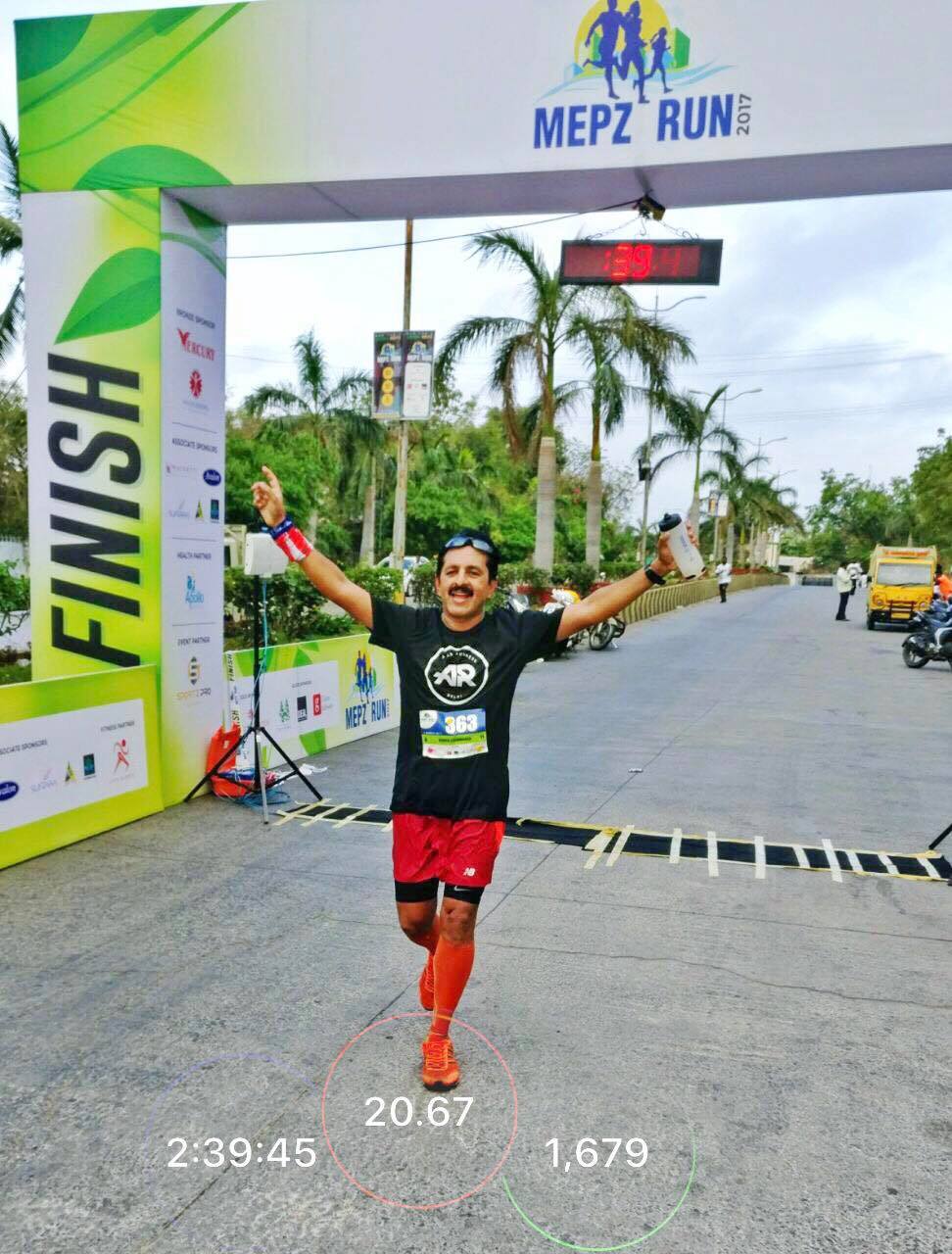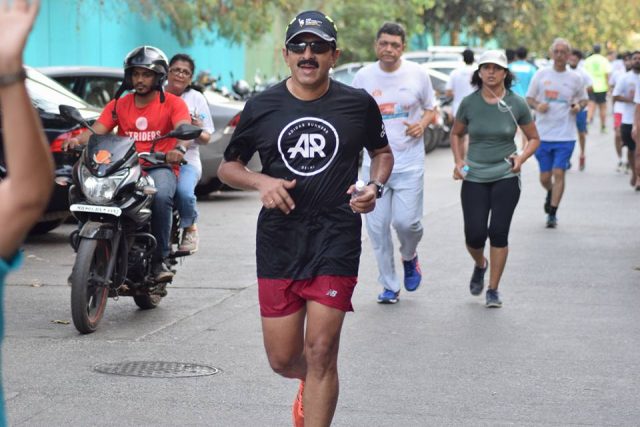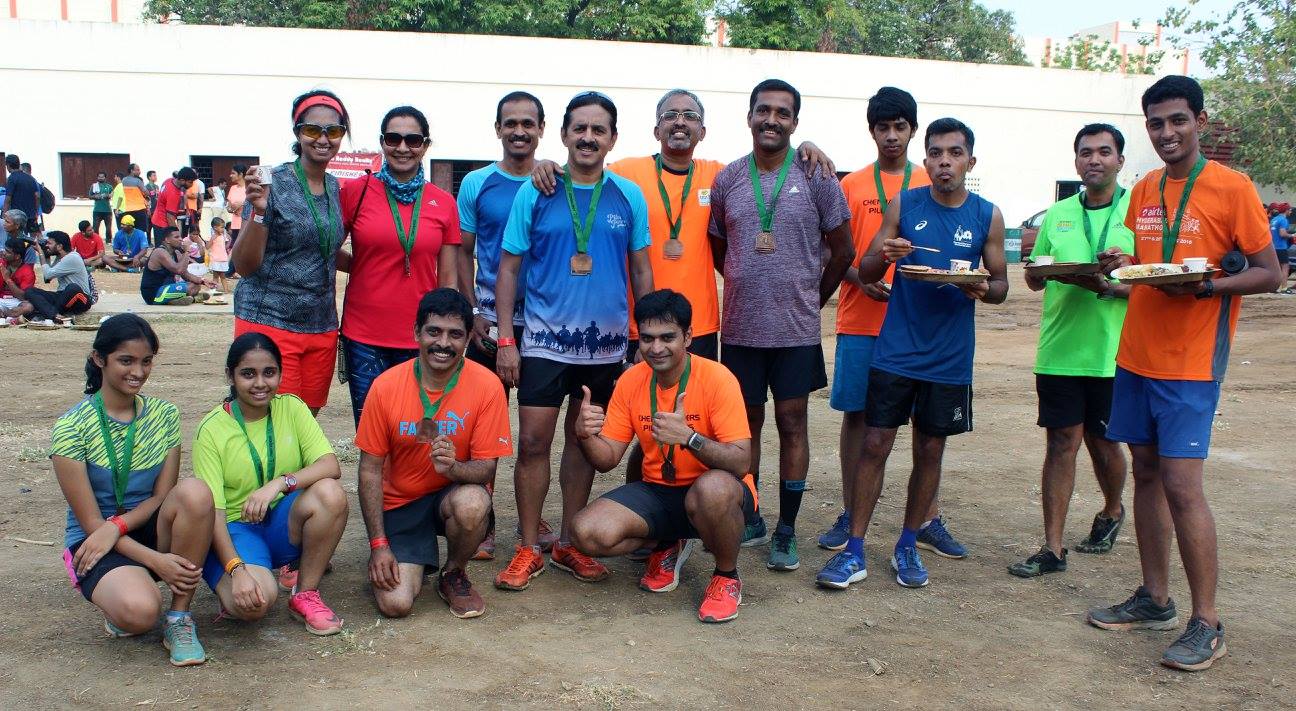Running is catching on like wildfire and Indians are reveling in this newfound passion to sprint across Indian roads, savoring the experience of staying healthy and fit.
Dr Kumar Janardhanan has been running marathons for quite some time now. He introduces himself as ‘doctor by profession, runner by passion, and lover by nature’. Dr Kumar is a Consultant Diabetologist at SIMS Hospitals, Vadapalani, Chennai and a Professor at SRM Medical College. His wife, Radha Kumar is a marathon runner too. He gives us some useful tips on what you need to know if you want to become a runner and also on training to run a marathon.
Give me a good reason to become a runner. Why should anyone run?
First of all, to become a runner you should identify what your objective is: why should you start running? In Chennai, most runners fall predominantly under one group – recreational runners. The present trend is to start running when you are in your late thirties or early forties. We are not sprinters or athletes by profession and probably, most of us would not even have run during our school or college days. Once our children are grown up, most people looking to keep themselves fit choose to run. In the case of women, they usually take up running to lose weight gained following childbirth or during pre-menopause or to reduce cholesterol. Also, most of us genetically inherit co-morbid conditions like diabetes, BP, obesity etc, which are a fertile ground for cardiac problems as we age. That is a good reason to run, to keep these conditions at bay or under control if you have already acquired symptoms of any of these non-communicable diseases.
Once you become a runner, at what point in time does one think of doing a marathon?
Nobody thinks about marathons when they start running, which would probably be for a half hour or so every day. But once you are in it, your body starts changing. We have a neurochemical named endorphin in the brain that gets stimulated when you run or exercise; it gives you a kind of high. We call it the runners’ high. Once we start enjoying running, we get enticed to do more and more and that is what keeps you running. Moreover, you end up joining a group of runners and that is a great motivation. You learn the ropes and refine your technique. This again motivates you to take up running seriously. When you run in groups, you forget your pace or distance and enjoy it because you are also communicating while running. This is how it starts.
What are the first steps of marathon training?
Marathon running involves doing 42.2km. To make a beginning, you start with baby steps first. Usually one starts with 5km and slowly graduates to 10km and so on till you are able to do 21.1km, which is a half-marathon. The process from the couch to becoming a half marathoner who can run 21.1 km comfortably takes about 6 to 8 months, depending upon the training they can put in consistently after balancing their domestic chores and career demands.
The training schedule goes something like this-
Monday is a rest day.
Tuesday, you do speed intervals involving high-intensity training when you cross the aerobic zone. You do a 400m dash and walk slow for 40 seconds and then do a 400m dash again. Or you would do a hill run or run up a flyover.
Thursday and Saturday are easy run days to build up mileage.
Sunday is for long-distance runs or LSD, which means long slow distance. You run slow but cover more distance. This is a part of endurance training and for an average person, the body has to sustain six hours of running. To complete a marathon of 42.2km the training involves group running, building up mileage of 32 to 35km in about eight months. Once you reach 21km comfortably, you have to do six to eight events for the next year and a half.
You run four days a week and on other days do cross fit training, which does not have foot-impact (your feet pounding on the ground) such as cycling, swimming etc.
Once you have completed a half-marathon, how do you train to become a complete marathoner?
Running a marathon is actually a mental game. If you can do a half marathon comfortably, it does not mean you would be able to do the other half easily. In fact, running from 21.1 to 42.2km involves a lot of intricacies. This is because the glucose which is stored in our body as glycogen depletes in about three hours, which coincides with the completion of a half marathon. In three hours, you almost reach 25km. From half to full marathon, the body does not have any fuel and this is what we call hitting the wall at 30km! This is when you start cramping, etc. For the second half of the marathon, you need to practice nutrition.

An important part of marathon training involves building the aerobic zone. In the five-zone definition, the aerobic zone is a heart rate between 70-80% of your maximum heart rate. It is a zone where you are exercising at moderate to vigorous intensity. For example, my heart rate is 142. I should run at a pace where my heart rate is between 135 to 142. This helps us to use fat instead of glucose as the fuel. Expert marathon runners don’t burn glucose, but burn fat. To run a marathon, you have to maintain the 80-20 principle where you have to do 80% of the total mileage in your aerobic zone and 20% in speed intervals.
Knowledge about nutrition during a marathon is of great significance. We need to prepare our body by having a banana during the pre-run and having fluids every 15 to 20 minutes, such as energy drinks, etc. Your intake of fluid depends upon your sweat factor. If you sweat more, you may need to hydrate every seven minutes. It is important to take fluids in sips and avoid gulping because when you do that while running, there is a risk of asphyxiation. During the marathon, you can pick up fluids, banana, chikki and salted drinks or snacks from aid stations.
Another important requirement is that your breathing rhythm should be in sync with your stride. This helps us retain our form. There must be good arm swinging too. All these come under basic training.
After training for a full marathon, if you can do 32 to 35km at least four weeks prior to the event, you are ready. For this, you may need two years of building up before you start training for a full marathon.
What exactly does training for a full marathon involve?
Training for a full marathon includes exclusive training for 15 to 16 weeks. You don’t run 42.2km to train for a full marathon. You train to do 32km four weeks prior to the event. If you can do this, your body will take you through the rest of the 10km during the marathon.
Tapering our run is important during these 16 weeks. Speed, pace and distance are all our focus. Just four weeks before an event you cannot afford to get an injury. Once you have crossed 32km you start reducing the distance to 16, 14, 12, 10 8km during the next four weeks and simultaneously also reduce pace. You can predict at what time you can finish your marathon based on your 5km or 10km run. There are websites like www.runnersworld.com where you can get this information if you enter details of your 5km run. I take 5.30 hours to complete the marathon comfortably. Once you have this information you know how you can pan out your run. This information is useful only during congenial weather conditions and a flat terrain.















































